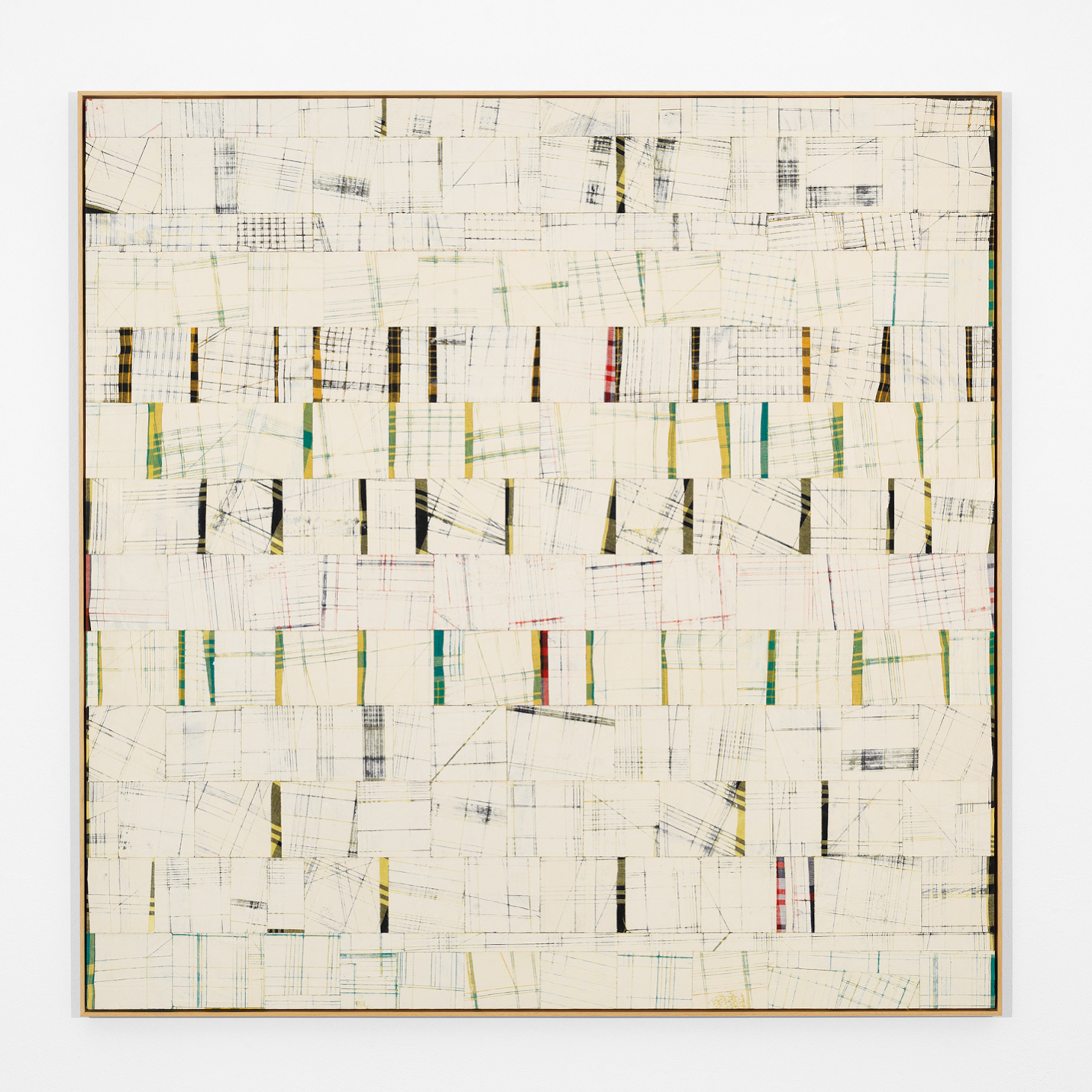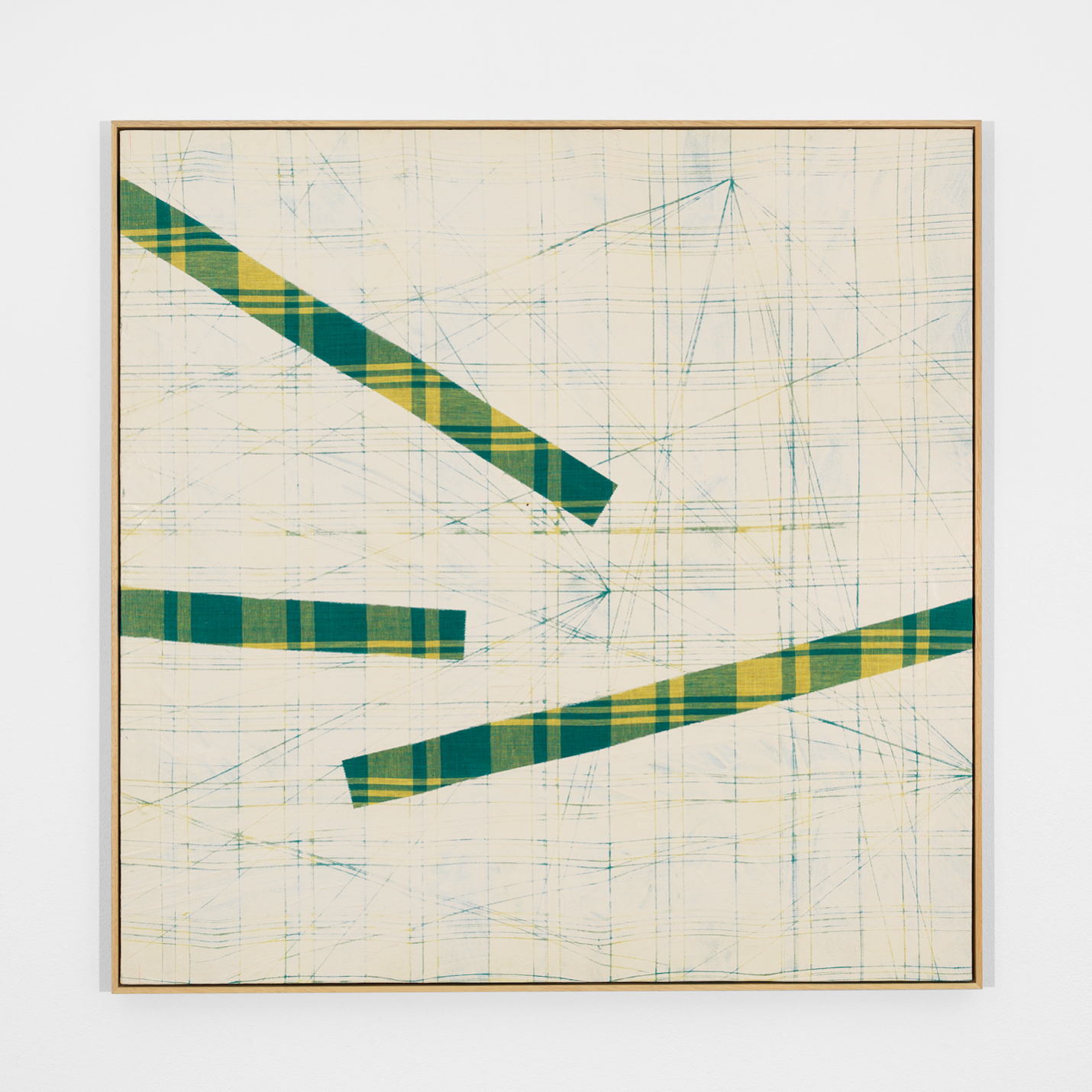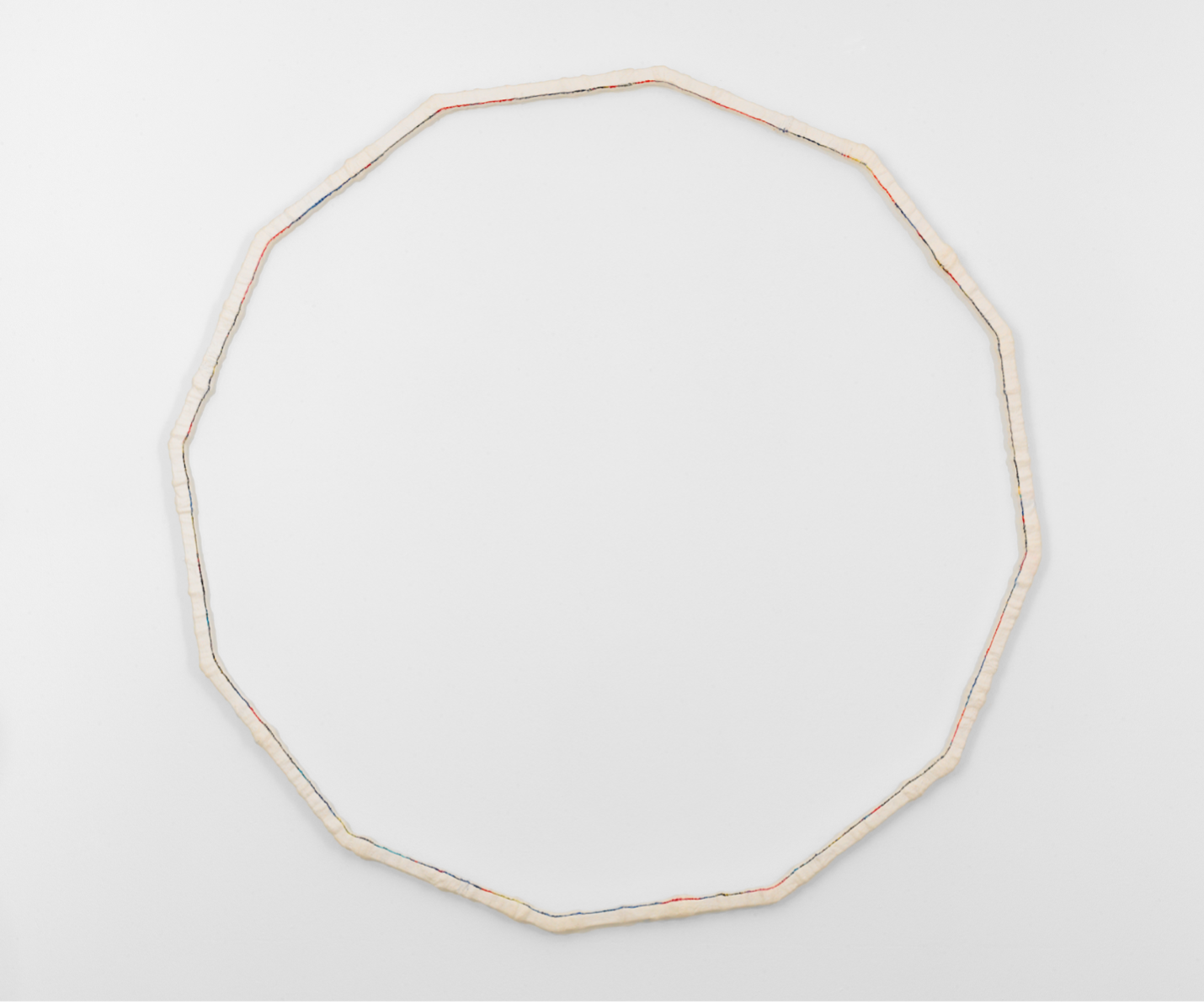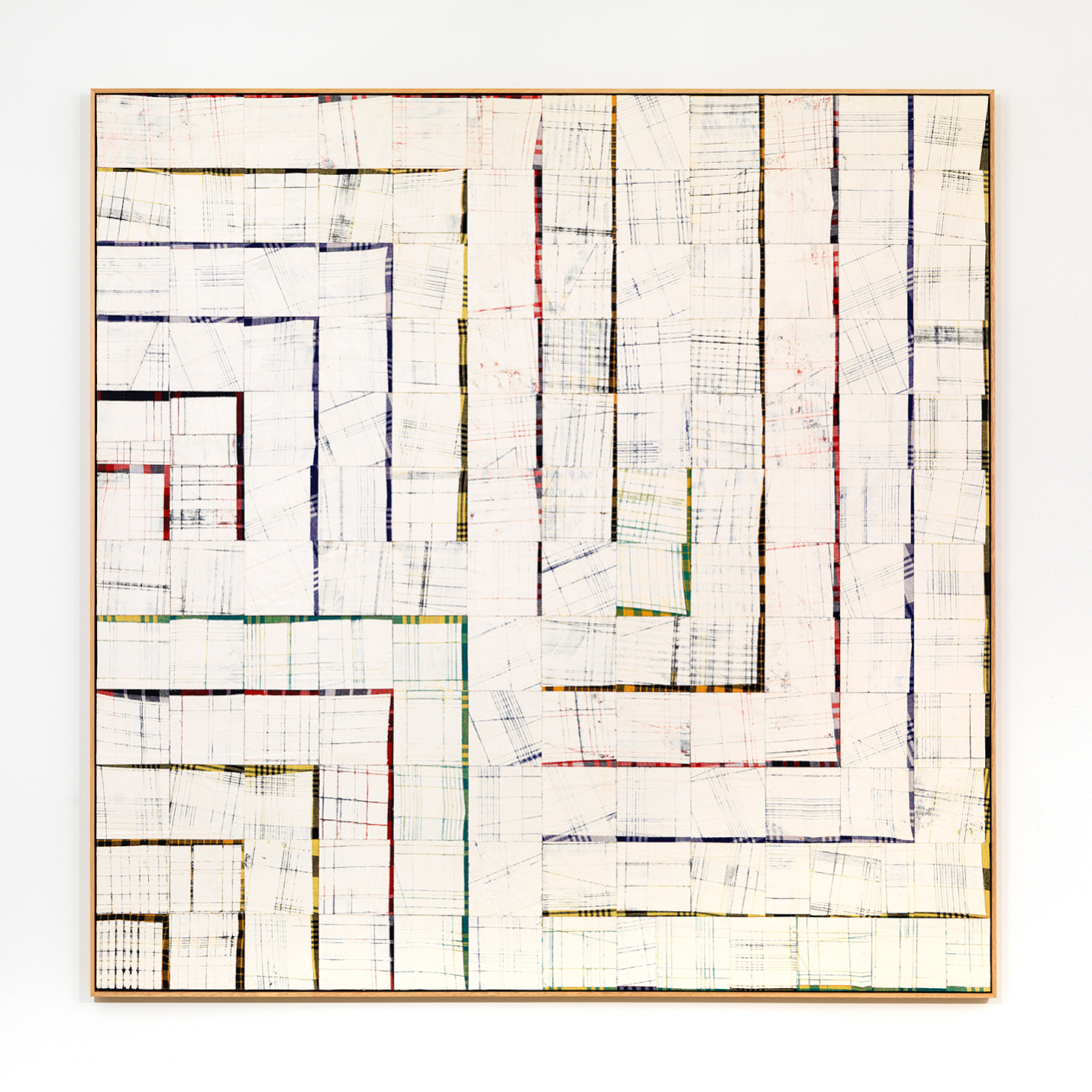
PIMBA AGIDA X, 2020. Courtesy Remy Jungerman and Fridman Gallery, New York. Photo: Aatjan Renders
Remy Jungerman’s “Brilliant Corners” at Fridman Gallery is the first major US solo show of the artist, known for his panel works and sculpture, which present a postcolonial approach to minimalism. This show comes after his co-representing the Netherlands at the Venice Biennale in 2019, and ahead of his solo exhibition at the Stedelijk Museum in Amsterdam later this year. Jungerman has created an entirely new body of work for this show, refining the textured minimalist panels he has developed throughout his career with his use of materials indigenous to Suriname (colonized by the Netherlands from 1667 until 1975).
Jungerman creates panels of cloth in color-grid patterns overlaid by white. Pimba, the kaolin clay he uses to create the white pigment, is sacred in the Afro-Surinamese religion Winti, where it is used for purification. While he has used Pimba in previous works, it is central to the works in this show. These Pimba works are some of Jungerman’s most intricately gridded pieces to date.

PIMBA AGIDA MADAFO VI, 2020. Courtesy Remy Jungerman and Fridman Gallery, New York. Photo: Aatjan Renders
For Jungerman, the act of creating is how he honors his ancestral Surinamese upbringing on his mother’s side; the artworks are the leftover. The artist explained, “The idea that inspired me the most, especially when I’m in Suriname at an ancestral ritual from the family, from my mum’s side, is that I’m very much taken by the leftover. When everyone is gone, I like to walk around the place and take pictures from the things that are left behind.” The panels are achieved through an extensive layering process that involves textile, tape, kaolin clay and carving. The materials and lines overlap, changing color and direction. What appears straight, in fact, curves within the dominating color of white from the kaolin clay.
Jungerman’s materials and reference points present a postcolonial approach to the minimalist form: he visits visual references the viewer may associate with famed 20th century minimalist painters and reconsiders these forms with his own reference points. His geometric lines refer to grids seen in his childhood printed on Maroon tribal clothing, and in books of Western art that he consumed. The syncopated rhythm of the Agida Drum—a 2.5m long drum played in Maroon tribes’ rituals—are felt in the works, palpable in the rhythmic and fragmented movements of the lines.

DAGWE (dodecagon), 2020. Courtesy Remy Jungerman and Fridman Gallery, New York. Photo: Aatjan Renders
A series of sculptures in the show mostly consist of horizontal architectural works that use materials with practical functions: wood planks, screws, etc. The standout sculpture, however, is Dagwe (dodecagon) (2020). The huge wood dodecagon, like the panels, is covered in Pimba that has been carved to reveal the underlying color and pattern of the textile beneath it. The title Dagwe references a snake connected to the Earth Pantheon in Winti. Jungerman bridges the layering process used in his paneled works into a new form with this cyclical piece.
This exhibition highlights the cohesive body of works that Jungerman has created over the span of his career: panels and sculptural works that emphasize the untold breadth and stories that are still to be considered within a minimalist form.

PIMBA AGIDA VI, 2020. Courtesy Remy Jungerman and Fridman Gallery, New York. Photo: Aatjan Renders

